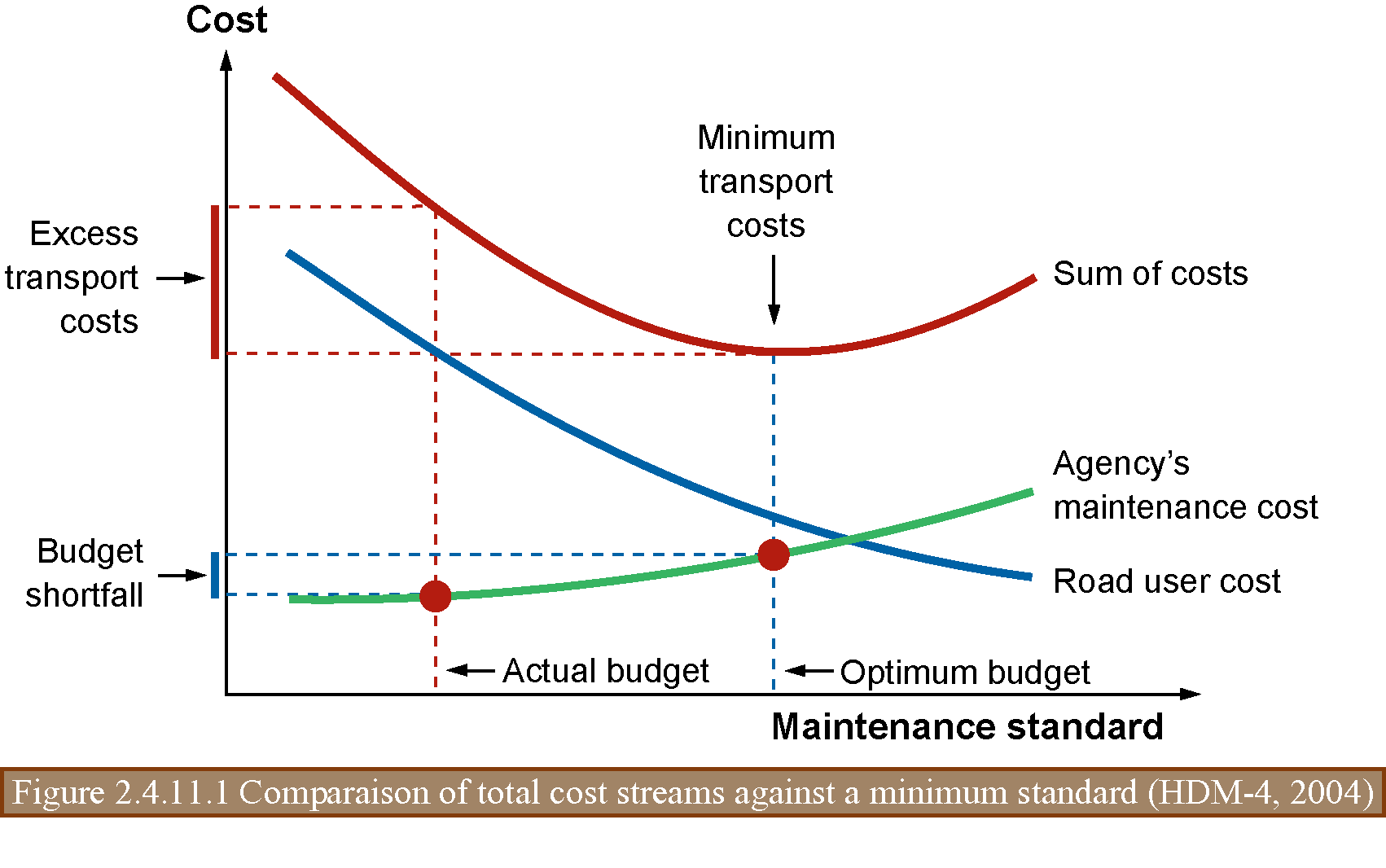
Asset Management Manual
A guide for practitioners!

Asset Management Manual
A guide for practitioners!
The Roads Development and Management Tool (HDM-4) is a tool for the analysis, planning, management, and appraisal of road maintenance, improvements, and investment decisions. In 1998, PIARC was assigned the intellectual property rights of HDM-4 on behalf of its original stakeholders (HDM-4, 2004). The HDM-4 analytical framework is based on the concept of pavement lifecycle analysis and is applied to predict the following over the lifecycle planning period of a road pavement (typically 15 to 40 years):
The model predicts road deterioration as a function of pavement construction characteristics, traffic loading, and climatic conditions and is directly affected by the standards of maintenance and improvements applied to repair the defects calculated. The long-term condition of the road pavement depends upon the application of these maintenance and improvement standards. Consequently, HDM-4 can determine the costs required to maintain the road to a standard defined by the user within HDM-4. The impacts of the road condition and road design standards on road users are quantified in terms of road user costs, which are made up of the following:
The socioeconomic effects comprise vehicle emissions, energy consumption, and other welfare benefits to the population served by the road network under analysis. HDM-4 is designed to make comparative cost estimates and economic analyses of different investment options or road maintenance strategies. The economic benefit from each road investment strategy is determined by comparing the total cost streams (transportation agency, road user, and socioeconomic costs) against a minimum standard, as illustrated in Figure 2.4.11.1.

HDM-4 can be used in the lifecycle planning process by determining the benefits, costs, economic efficiency, and functional performance of the network by applying different maintenance and improvement standards to the network being analyzed. HDM-4 also allows organizations to determine the most economically efficient maintenance activities to carry out when budgets may not be sufficient to carry out all the work indicated.